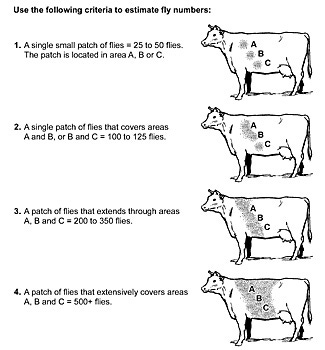Boosting Gain Through Parasite Control
Researchers at the University of Florida (UF) remind in a horn fly fact sheet that irritation and blood loss caused by the flies can cost 0.3-0.5 lb./day.
March 22, 2011

There’s nothing new about the economic returns associated with effectively controlling horn flies and internal parasites. But, it’s still stunning.
Consider a study published by researchers at Louisiana State University last year. It included three trials of stocker cattle (56 head/trial) grazing bermudagrass from May to August three different years; the trials lasted 84, 98 and 112 days.
Gain across all of the treatment groups was lower than expected, confounded by pasture growing conditions. And, researchers say horn fly control was less than what they expected, in part because fly populations failed to achieve or barely achieved economic threshold levels in two of the trials.
 Yet, calves treated for both horn flies and internal parasites averaged 28.7 lbs. more gain that untreated calves.
Yet, calves treated for both horn flies and internal parasites averaged 28.7 lbs. more gain that untreated calves.
Researchers at the University of Florida (UF) remind in a horn fly fact sheet that irritation and blood loss caused by the flies can cost 0.3-0.5 lb./day.
In that same fact sheet, UF researchers explain, the economic threshold is approximately 100/flies per side of the animal. “Numbers of flies per ½ animal may be easily estimated in the field under sunlit or shade conditions. Animals should be selected randomly, and estimates should be made for 10 animals per herd,” say the researchers. They offer this illustration as guide.
Source: University of Florida, Fact Sheet ENY-285
About the Author(s)
You May Also Like




.png?width=300&auto=webp&quality=80&disable=upscale)
